BY HENRY SHEEHAN
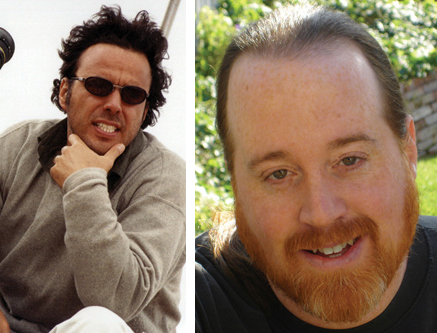 TEAM BABEL: Alejandro Gonzalez Inarritu (left) and his longtime editor
TEAM BABEL: Alejandro Gonzalez Inarritu (left) and his longtime editor
Stephen Mirrione. Their collaboration is like an ongoing conversation
between two professionals. (Credit: Fernando Franco)In a familiar posture, Alejandro González Iñárritu is standing and tracing modest gestures with his hands, his eyes bright and his voice enthusiastic. "I love the three-act theory," he says. "It works and works beautifully. But you don't necessarily have to structure a story that way: Cortazar and Borges wrote in different structural styles."
"Plus," the 43-year-old filmmaker laughs, "I have ADD. I can't pay attention to one thing too long."
Indeed there are different ways of telling a story, as anyone who has seen the work of the celebrated Mexican director knows. His breakthrough feature, 2000's Amores perros, debuted at Cannes and dazzled international audiences with the multiple viewpoints of three overlapping stories set among Mexico City's poor. With 2003's 21 Grams, González Iñárritu crafted a similarly multi-layered saga that used, as the earlier film did, a car accident to unite not just otherwise disparate stories, but lives as well. This time, the movie was set among the American middle and working classes and employed Hollywood stars.
Both movies display the director's distinctive editing style. The cuts between the separate episodes are not just perforce noticeable, but almost wrenching, pulling us out of stories at moments of maximum interest and depositing us into–inside of, really–what seem like utterly distinct worlds. But within those new worlds, the cutting is classical, quiet and seamless.
On his new project, Babel, González Iñárritu and his constant collaborator, screenwriter Guillermo Arriaga, go farther. Instead of three stories set in close geographical conjunction, he has four set on three different continents. He has stars (Brad Pitt, Cate Blanchett, Gael García Bernal), but mostly he's chosen to work with non-professionals. And the action that unites the characters in Babel–the "car accident," symbolically speaking–is subtler, even invisible, to the characters.
It sounds, in other words, like a hell of an editing job. But perhaps, not so much, according to Stephen Mirrione, the editor who, at age 37, has established himself as one of the best in the business. An Oscar-winner for Traffic, Mirrione has edited other Soderbergh-Clooney efforts, including Good Night, and Good Luck. Throw in a credit like Thirteen Conversations About One Thing and you get the idea that maybe you should listen to this guy.
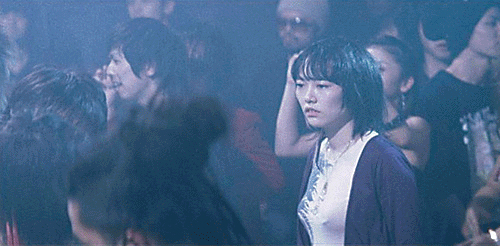 TOKYO STORY P. 1: 1-3 in a series of 15 shots of a young Japanese
TOKYO STORY P. 1: 1-3 in a series of 15 shots of a young Japanese
woman (Rinko Kikuchi) trace the shifting mood, tone and visual
styles that were stitched together in the editing room to create one
of Babel's multiple story lines. (Frame pulls: Rodrigo Prieto, DP)"The thing about Alejandro," Mirrione says, pointing to a bulletin board full of different colored four-by-six cards, "is that the whole larger conception in his mind is so emotionally well thought-out, that it doesn't need to change in the editing, or doesn't need to change much. It's there in the script."
The cards, of course, are the paper guidelines filmmakers use in cutting a movie; each scene gets its own card while, in this film, each of the separate storylines gets its own color. González Iñárritu and Mirrione use a greater variety of colors–green, blue, yellow and red–thanks to the four-part narrative. As I visit the editing room over a number of weeks to observe the director at work, the chunks of colored cards undergo only one significant move.
That doesn't mean all that's left is "tinkering" with one sequence or another. On the contrary, the editing of an individual scene becomes even more critical. Like a single thread of a spider's web, a scene in Babel reverberates throughout a network of human and dramatic connections. González Iñárritu has put himself in the same pickle D.W. Griffith invented with his multi-part story for Intolerance. The dramatic tone, the amount of action, and, most importantly, the type and intensity of emotion depicted in one scene in one storyline affects the emotional content in the next scene in the next storyline. But, of course, these tones, actions and emotions aren't static; they have to progress. Imagine four interconnected rows of dominoes set up in three dimensions all falling down in a strictly worked-out temporal order and you have a sense of Babel's editing.
"When I turn up in the editing room after shooting," says González Iñárritu, "I have all this film. It's like a block of granite and I have to pull," and here he makes a groaning, straining gesture with his arms and hands, "this film out of it."
González Iñárritu and Mirrione do their sculpting in a small den-like office in West Los Angeles. Mirrione, at his Avid machine, has a desk which holds a huge monitor and keyboard, while a punchboard full of plugs sits off to his left. The director sits on a couch placed at a right angle to his editor's set up, watching on his own monitor. It's all very comfortable, except for the ever-so-slight shortage of air.
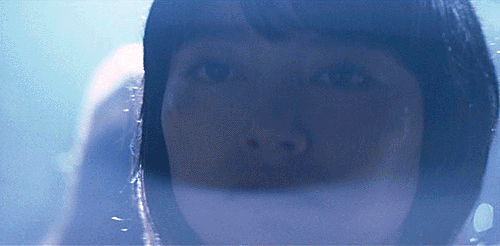 TOKYO STORY P. 2: 4-7 in a series of 15 shots.
TOKYO STORY P. 2: 4-7 in a series of 15 shots.The physical comfort extends to the relationship between director and editor, who have nicely complementary personalities. González Iñárritu is the more intense of the two, though hardly overbearing. Mirrione is a bit laid back, but not reluctant to give, or even press, his opinion. Their collaboration is akin to an ongoing conversation between two professionals and while the director has the last word, Mirrione is keyed into, and excited by, Gonzalez Iñárritu's vision.
Having observed how complicated it is to keep scenes moving within themselves, and then get matched up with the scene from a different storyline, it doesn't surprise me to see the two filmmakers start to fine tune a sequence not with its beginning, but with its ending. After all, it's not just an ending, but a lead-in. At least that's the thought that occurs to me as I watch González Iñárritu and Mirrione fuss over the finale at the end of a sequence from Babel's Tokyo story. Its main character is a deaf Japanese girl, Chieko (Rinko Kikuchi, in her first leading role), caught in what would ordinarily be a sad tale of young, unrequited love, except for the emotional devastation she feels. The moment being cut shows her returning to her apartment building following a day in which her romantic longings reached their highest possibilities for fulfillment and their worst realization of failure.
The camera is in the apartment house lobby watching as the automatic door swishes open, Chieko enters and makes her way to the doorman's desk, and the door closes with a facile finality. This is supposed to have been the last shot in a long, complex, nearly daylong sequence.
"That door is annoying," says González Iñárritu.
"Yeah, I hate that shot, too," replies Mirrione rubbing his chin, a gesture that before very long I recognize as one of the good-natured editor's few outward signs of dissatisfaction.
The director has his editor pull up some shots he had taken of Kikuchi entering the lobby from another angle. He had shot 20 takes, telling his neophyte performer that she was returning to her home a different person than when she left. But he has fewer choices than he had hoped. The shots had been taken from two setups: wide, and less wide. In the wider setups, which González Iñárritu prefers, the director and editor immediately notice their young actress walking oddly. In the less wide shots, though, she's fine and, appended to the "annoying door" shot, it seems to end the sequence on the right note. As for that door, it's still there, along with its "whoosh," just safely tucked away from the end.
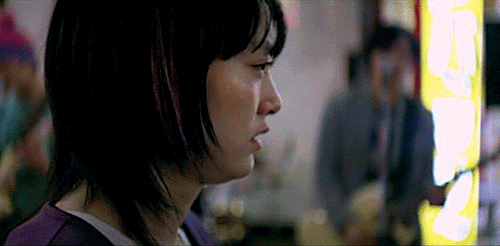 TOKYO STORY P. 3: 8-11 in a series of 15 shots.
TOKYO STORY P. 3: 8-11 in a series of 15 shots.The importance of making sure those two shots had just the right quiet notes of completion came through only when the rest of the scene was revealed. As it turned out, González Iñárritu and Mirrione were constructing the story out of three beautiful, tonally different montages in which the sound was made up of source music, ambient noise and soundtrack music.
The first is a lyrical, cinematic ode to the nouvelle vague during which Chieko and her friends fool around on some playground equipment, drink a little and act silly on the subway. Despite its light, romantic mood, the montage still pushes a strong storyline; with her best friend's encouragement, Chieko cozies up to, and gets a response from the boy on whom she has a crush.
The second montage takes place at a disco, complete with the disco ball and pelvis-pounding music we expect in such settings. In a purely visceral way, this scene is directed more at our midriffs than our brains. But in contrast to the "soft" cutting of the previous montage, which despite the story elements still emphasizes mood, the cutting in the disco sequences quickly turns into a harsh combination of point-of-view shots, as Chieko sees her best friend move in on the same boy she wants. The editing seems to literally slice through the distracting music and light.
The final montage before Chieko returns to the lobby features the girl alone on a crowded Tokyo street making her way home. Aurally, it's the most complicated sequence, with the sound of crowds and a street band seeping in and out of the soundtrack, depending on the direction of Chieko's gaze. It also makes clear González Iñárritu's visual plan for the sequence. As the camera keeps Chieko in the same visual plane as her friends in the opening montage, then makes her the pivotal observer in the disco, now its long lens picks her out as the classic lonely, solitary figure in the crowd. A series of stationary shots and long tracks focus on her isolated figure as she goes home feeling as wretched as a rejected lover can feel.
But it's too many lovely shots and tracks according to González Iñárritu. "We can lose 30 percent of this," he says. Apparently not one of those directors who falls in love with his own shots, the filmmaker is true to his word. When I return to see the whole scene in its final edit, I'm astonished–to the polite amusement of my two hosts–to see how fast it all moves.
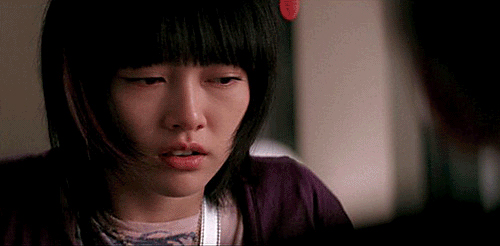 TOKYO STORY P. 4: 12-15 in a series of 15 shots.
TOKYO STORY P. 4: 12-15 in a series of 15 shots.BORDER INCIDENT
As subtly complex as the Tokyo sequence is, it's not the most complicated in Babel. That honor might go to a Mexican sequence which features Adriana Barraza, who played Gael García Bernal's mother in Amores perros. Here, she plays his Aunt Amelia, but more importantly, a housekeeper and nanny to two American kids. She and her nephew Santiago (García Bernal) have taken the two blond children–a brother and sister–with them on a short hop over the border to Mexico to a big wedding along with what she believes are all the necessary legal documents. But when they try to re-enter the United States, an officious border patrol agent who has been pissed off by Santiago demands to see a letter from the children's parents granting Amelia temporary custody. She doesn't have one. Santiago panics and drives off, a pair of border patrol cars soon speeding on his tail. Come morning, she deposits the kids under some trees and walks off into the desert, desperately looking for help. She thinks she finds it in the figure of a border agent, but he just cuffs her and even when she leads him and his colleagues back to her charges, all she earns is an expulsion from the U.S. And that's just a rough outline.
The wedding is the first time I see González Iñárritu show real regret over cutting a scene back and, frankly, you can't blame him. What's left is still a worthy example of Babel's signature trait: The insinuation of persistent, if almost subliminal narration, into a heavily atmospheric ethnic situation, all accomplished through montage.
The first cut of the wedding is a stand-alone piece, a self-contained short film that speaks with only the music of a Mariachi band and snatches of conversation and crowd noise. Amelia stands at the middle of things, a recurring figure who seems to dally just a bit with a man who just may be someone from her past. But that's really only a flash among many, including visions of the bride and groom in various greetings and conversations, drinking, and even a fight. But over it all, like some sort of nuptial spirit, is the band, interfacing with the crowd literally and figuratively. Of course, there are also elements that speak to the narrative within and outside the specific scene: Shots of the two American kids, a little lost, a little intimidated, until they are more at ease and finally integrated into the party, if only a bit.
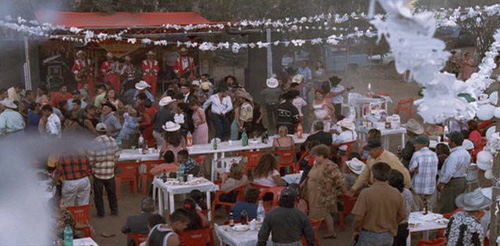 PLAYTIME: The centerpiece of another Babel storyline is a Mexican wedding.
PLAYTIME: The centerpiece of another Babel storyline is a Mexican wedding."This film has 2,500 set-ups and almost 4,000 cuts," says González Iñárritu. "If I didn't find the right set-up, there was no reason to panic, because you could tell a scene by opposing one shot with another, whether it's a master shot with a tight shot on Gael's eye, simply something."
Considering the virtuosity of the scene, González Iñárritu is ruthless. It's not torn to shreds; the fight, though, gets tossed out entirely. As both the director and Mirrione constantly drum home, Babel is about emotion, and paradoxically, if you get too caught up in the feeling of a moment, you lose the feeling of the whole.
You also have to maintain perspective, which is what dictates the editing of the next encounter–between Amelia, Santiago and the kids on the one hand, and a couple of officious U.S. border agents on the other. The first time González Iñárritu and Mirrione show the episode it plays pretty well. Santiago drives his clunky car out of the darkness and up to the brightly lit customs booths. Out from his little office comes the border agent, his girdle-tight uniform a nice indicator of his mindset. Leaning over Santiago and brusquely asking questions, he provokes the mildly drunk driver into giving a wiseass answer at just the wrong moment. The agent takes a look at the kids in the backseat and starts asking more questions. He takes some papers and goes back into his office; a second agent comes out and starts asking Amelia questions from her side of the car.
It's an efficient scene, but that's not what González Iñárritu wants. This is supposed to be the flashpoint where Amelia's perspective overtakes the action. We're not supposed to be watching a couple of border agents hassling a couple of Mexicans trying to cross the border, or a slightly drunk Mexican mistakenly trying to swagger his way past a tandem of pumped-up nobodies in uniform. What we're supposed to see is fear and anxiety overtake a good woman who might have skirted some rules, but meant only to celebrate a relative's wedding and make sure her charges had a good time in the process. Now, unexpectedly, events start to go horribly wrong.
González Iñárritu and Mirrione start shuffling shots. When the border guard emerges from his office, we see him come out from over Amelia's shoulder, a shot that might be Santiago's perspective, but which captures Amelia's reactions. As the guard comes around the front of the car, making his way to the driver's side, the filmmakers choose a subjective shot taken from within the car, rather than an objective, establishing shot taken from in front; the result is a heightening of suspense. They add more shots of Amelia looking worried. And, most importantly, they add crosscutting shots of the kids as the guard looms into the car and shines his light on the two of them, who are squirming awake.
The episode is transformed from a decent scene starter to a chase sequence to an introduction to, well, a woman on the verge of a nervous breakdown. But there's nothing funny or ironic about this breakdown, because it has a significant social and moral component, too. The chase follows a familiar frightening pattern until, for Amelia and the children, it suddenly ends in the desert with sudden stillness, silence and darkness–and the utter switch in the editing rhythm–doing nothing to relieve the anxiety but, rather, showing us another kind of fear.
González Iñárritu reveals a key to his filmmaking approach during the editing of the chase. He knows he left the second unit an order to shoot the rear lights of the border patrol cars racing down the dark highway, but Mirrione can't find them in any of his computer folders. So the director gets out his cell phone, calls his second unit director and discovers that those shots were never taken. He shrugs and just covers the shortcoming by using some of the same shots twice. No sweat.
"Something like that is not a big deal," Mirrione explains later. "There's no emotion involved. If there's an emotional moment, Alejandro will get it. But something like the shot of a car on a highway, you can always take care of that."
FEELING OVER INTELLECT
There is a remarkable moment in Babel when just one brief shot does make an enormous difference, though a viewer may not experience the effect consciously. It comes during the storyline featuring Brad Pitt and Cate Blanchett as an American couple vacationing in North Africa. Blanchett has been placed seriously– perhaps even mortally–in need of medical help while passing through a small town. Unable to convince a busload of tourists to help or even to stick around, Pitt has been reduced to badgering a policeman and trying to get an outside line on the village's sole telephone, which is in a tiny general store.
During these trials, Pitt's character has been able to befriend a villager who speaks some English, a man named Anwar, played by a non-actor. The American and Anwar have been bonding quietly when a policeman shows up and Pitt's character immediately starts bullying the cop. Then, discovering a phone line has opened up to the capital, the American runs to the store, a great deal of the village following him there in order to witness what, in a desert town's dusty routine, is a fairly momentous event.
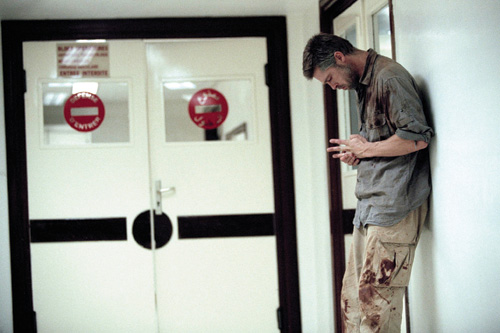 OUT OF CONTROL: In another Babel storyline Brad Pitt tries to deal with his
OUT OF CONTROL: In another Babel storyline Brad Pitt tries to deal with his
wife's injury while the couple is traveling in Morocco. (Credit: Unit Morocco)González Iñárritu shows Pitt's entry and first moments in the store focusing not on the action of the American, but on the villagers witnessing the action. That is, we don't see the American star, but the non-actors. "Pitt goes into the store three times," explains the director, "you don't want it to be the same every time."
That's true. But by editing the scene this way, González Iñárritu makes sure we experience the action not as the angry American–or, at least, not completely as the American–but partly as the detached and observant villagers. And this sets us up for a shot of Anwar, standing in the store, looking straight ahead and then down, a mostly stoic look on his face pierced by embarrassment–embarrassment for the rudeness of his American friend, embarrassment for his village's poverty, embarrassment for life's scarcities.
"That's the magic of working on every scene," says the director, who explains he had Anwar stand for a series of shots in different attitudes. "Intellectually people won't get it, but they'll feel it.
"Movies become art after editing," he continues. "Instead of just reproducing reality, they juxtapose images of it. That implies expression; that's art.
"The way I put together images is a reactive art. I know I have the craft with Stephen to get three or four meanings from a scene. A scene can be weak, the script can be weak, but we can make it intense and meaningful. It's the moment of truth."